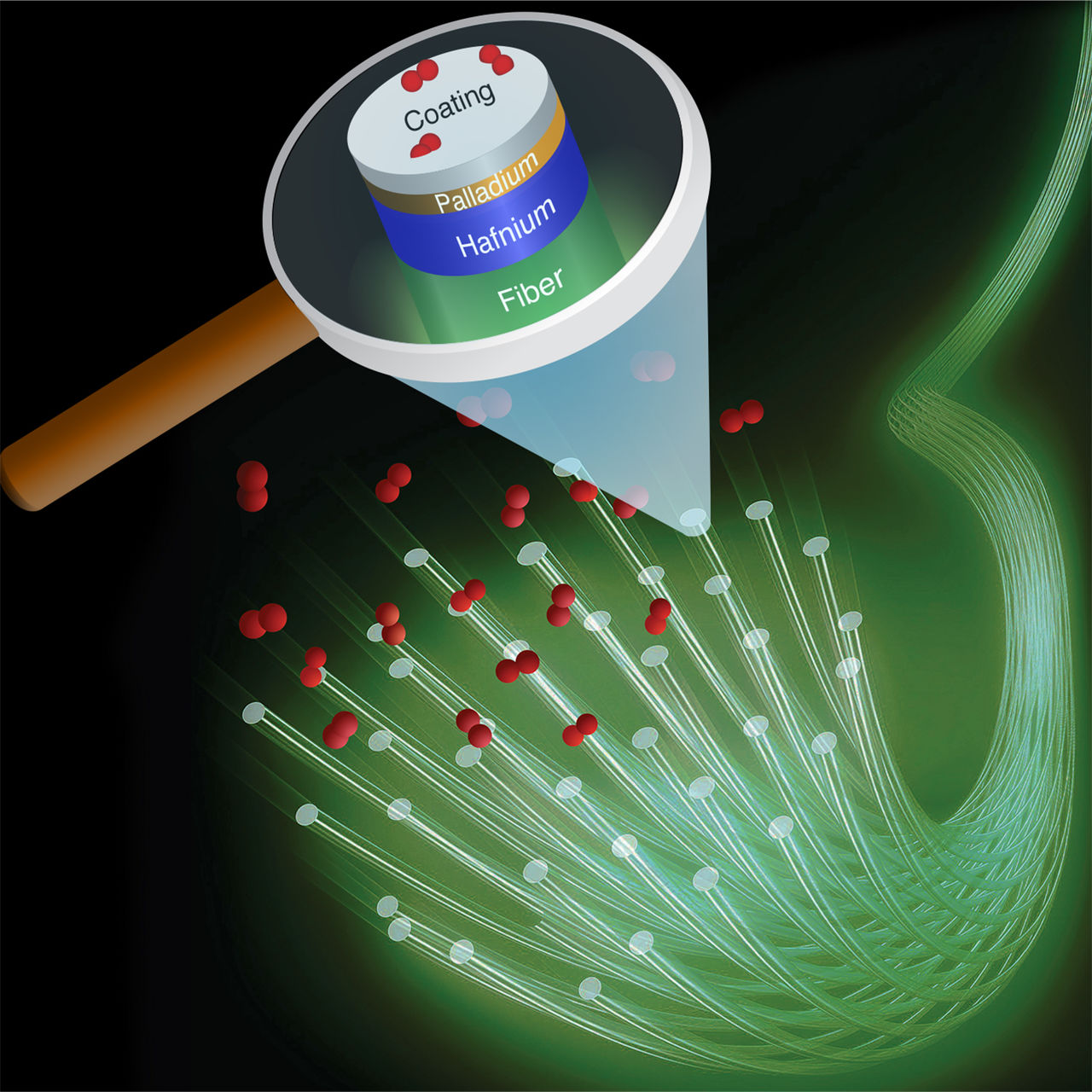The growth in world population, coupled with a continually developing global economy, has led to an increasing strain on energy. Hydrogen stands a good chance of being one of the replacements for fossil fuels as an energy carrier in the near future. It is clean, as water vapour and heat are the only by-products of combustion, and you can make as much of it as you want using just water and another energy source (for example solar energy).
However, there are several hurdles that must be overcome before the vision of a 'hydrogen economy' can become a reality. One of these issues is finding a reliable way of detecting gas leaks. Leakage of hydrogen into the air can potentially cause an explosion as the hydrogen reacts with oxygen in the air. Aside from this dangerous scenario, reliable sensors are needed to ensure as little hydrogen as possible leaks into the atmosphere.
Researchers from Delft University of Technology, Catholic University of Leuven and ISIS Neutron and Muon Source have recently discovered that the metal hafnium may be the perfect material for a hydrogen sensor.
Optical hydrogen sensors
Optical hydrogen sensors absorb hydrogen in a process that alters their reflectivity. By measuring this change in reflectivity the concentration of hydrogen in a specific location can be obtained.
'Until now, pure palladium was mainly used as an optical hydrogen sensor. But over the last few years, we at Delft have shown that a gold-palladium alloy is a much better sensor. Fellow-researchers around the world are also studying this.'
Prof. Bernard Dam, Delft University of Technology.
Whilst the gold-palladium alloy used in optical hydrogen sensors can function at room temperature it is unable to detect low hydrogen pressures.
Sensitivity at low pressures and easy calibration
Research led by PhD candidate Christiaan Boelsma from Delft University of Technology, published in Nature Communications, shows that hafnium has this sensitivity at low hydrogen pressures.
'The unique property of this material is that it can optically measure a minimum of six orders of magnitude in pressure. The lowest pressure measured is 10-7 atmosphere, but this pressure is determined by the measurement set-up. It looks as if a pressure of three orders of magnitude lower could be measured with hafnium, but we need to do more research to confirm this.'
Prof. Bernard Dam, Delft University of Technology.
Another benefit is that the optical properties of hafnium change linearly with the pressure and temperature of the material. This makes hafnium sensors very easy to calibrate.
Probing the sensor material using neutrons
A thin film of palladium-capped hafnium was studied using the technique of neutron reflectometry on the instrument Offspec at ISIS Neutron and Muon source.
The technique of Neutron Reflectometry involves shining a highly collimated beam of neutrons onto an extremely flat surface and measuring the intensity of reflected radiation as a function of angle or neutron wavelength. The exact shape of the reflectivity profile provides detailed information on the nature of the hydrogenation process. It showed that the hydrogen content of the film increases linearly with the logarithm of the ambient hydrogen pressure
Future work
Despite the benefits of the hafnium hydrogen sensor it is not superior to the palladium-gold sensor in every way. With an optimal functioning temperature of 120°C there is still some way to go in perfecting the hafnium hydrogen sensor.
Prof. Bernard Dam thinks that this problem can be solved by placing a thin layer of hafnium on top of an optical fibre, before heating the fibre with a warm-up LED as is depicted in the image below.

|
Figure 1 Placing a thin layer of hafnium on top of an optical fibre, before heating the fibre with a warm-up LED may solve the issue of hafnium working best at a temperature of around 120°C. A thin Pd layer is needed to allow for dissociative hydrogen absorption by the Hafnium. Credit: Christiaan Boelsma, Delft University of Technology.
|
In addition to their work on hafnium the University of Delft is currently conducting extensive research into hydrogen. Late last year, Prof. Fokko Mulder unveiled the 'Battolyser', a device that combines electricity storage and hydrogen production in one system. The Battolyser is a cheap way of creating and storing hydrogen, and brings the so-called 'hydrogen economy' a step closer. This research into highly sensitive hydrogen sensors represents another step in the same direction.
Further information
Details of the research article can be found below:
C. Boelsma et al. “Hafnium—an optical hydrogen sensor spanning six orders in pressure" Nature Communications 8, 15718 (2017). DOI: 10.1038/ncomms15718.
